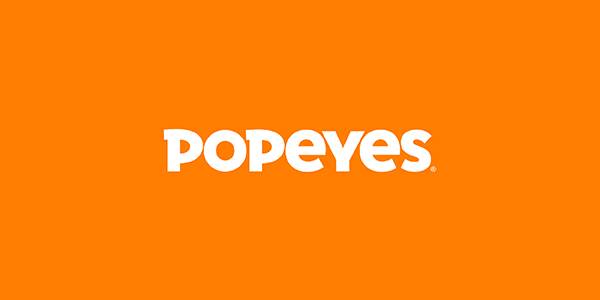The Future of Out-of-Home Advertising: Trends, Technology, and the Next Wave of Innovation

Out-of-home (OOH) advertising is entering its most transformative era yet, driven by AI, automation, and creative experimentation.
Despite OOH ad spending declining in the first half of the decade due to pandemic-era restrictions, economic restlessness, and advertisers reallocating budgets toward online channels, the medium has been remarkably resilient in recent years.
In 2024, ad spend surpassed $9 billion USD for the first time, with 60% of the top 100 OOH advertisers increasing their spending year over year. It’s now on track to reach $10.72 billion USD by 2029.
The reason? Although often seen as a legacy channel, OOH is proving it’s anything but outdated and finding new life through digital out-of-home (DOOH) advertising.
With dynamic digital screens replacing static billboards, OOH has entered a new era defined by interactivity, precision, and adaptability.
As a result, DOOH now represents 42% of total OOH revenue, and its innovation and flexibility have attracted some of the world’s biggest brands, who are leveraging its programmatic capabilities as part of their marketing strategies to deliver more timely, contextually relevant campaigns.
In this blog, we’ll explore the key trends and emerging technologies—from AI-driven creative and sustainability to DOOH’s expansion into new environments and greater programmatic accessibility—that’s redefining what’s possible and shaping the future of OOH advertising.
The Digital OOH Evolution
DOOH has become the catalyst behind OOH’s resurgence, transforming a centuries-old advertising channel into one of marketing’s most innovative mediums.
Fueled by advances in data and AI, DOOH now offers measurable, dynamic campaigns that can adapt to match the right audience, context, and location.
From Traditional OOH to Digital Billboards
For decades, traditional OOH meant static posters, hand-painted murals, and vinyl billboards—all of which provided massive reach and brand visibility but limited flexibility.
Now, high-resolution LED screens and digital billboards allow creatives to evolve as quickly as the world around them. Digital placements can sync to live events, trigger interactive animations with motion sensors, and even transform real-world spaces through anamorphic creative and augmented reality, inviting audiences to step directly into a brand’s story.
What was once a one-way medium has transformed into something that can feel like a living, breathing extension of a brand, providing not just reach, but deeper levels of engagement than previously thought possible.
The Rise of Programmatic DOOH
Programmatic technology continues to unlock the full potential of DOOH, bringing automation, targeting, and optimization to screens that were previously inaccessible or hard to activate through traditional buying methods.
In simple terms, programmatic DOOH means advertisers can buy, schedule, and optimize DOOH inventory through the same demand-side platforms (DSPs) they already use for display, video, or connected TV (CTV) campaigns.
For marketers used to the speed of other digital channels, programmatic DOOH offers similar levels of flexibility, efficiency, and control but with the added advantage of reaching audiences in real-world environments where attention is less divided.
Merging the Physical and Digital
The impact of DOOH doesn’t end when someone glances at a screen.
With QR codes, NFC-enabled screens, and mobile integrations, DOOH allows advertisers to connect with consumers and drive action across the entire customer journey. A viewer can scan a code to redeem an offer, tap their phone at a retail display to learn more about a product, or see a retargeted ad on their mobile device after passing by a digital screen—helping to educate, engage, and guide consumers closer to a decision.
Social media is amplifying reach and engagement even further. Interactive and engaging OOH campaigns often go viral on platforms like TikTok, Instagram, and LinkedIn, extending impressions far beyond the street corner.
AI’s Role in OOH Campaign Planning, Targeting, and Measurement
AI is reshaping DOOH into a more adaptive, insight-driven channel that can anticipate audience patterns and deliver contextually relevant messages across locations. By combining predictive analytics with real-time data, AI helps advertisers move from reactive planning to proactive decision-making, enhancing everything from forecasting and creative strategy to performance measurement.
Leveraging Data for Targeted Audiences
AI unlocks new precision in DOOH targeting by using real-world signals like time of day, location, and behavioural data to deliver the right message at the right moment.
For instance, AI can analyze live data like mobility patterns and local conditions such as weather or traffic flow to forecast ideal ad times and placements, maximizing visibility and performance.
Real-Time Updates & Optimization
Thanks to AI-driven automation, DOOH can now be as dynamic as the environments it inhabits.
For example, a quick-service coffee chain can promote hot drinks during morning commutes or switch to iced beverages on warm afternoons through automated creative rotation to align messaging with audience behaviour, while a retailer can highlight in-store promotions when nearby foot traffic peaks.
While true real-time creative swaps still require pre-approval from media owners, advertisers who plan ahead can schedule dayparted or context-based variations that automatically trigger under specific conditions. With this level of foresight, AI ensures every impression remains relevant, timely, and impactful, even when operational guardrails are in place.
Automated Campaign Management
Machine learning is streamlining how advertisers manage and measure DOOH campaigns. AI can automatically allocate budget to top-performing placements, improving efficiency and ROI.
On the measurement side, AI models refine audience accuracy by layering real-time mobility data, information from screen-level sensors, and dwell-time patterns onto traditional geo-estimates.
These insights also inform bidding and ad placement decisions, giving marketers the confidence to plan DOOH with the same precision they expect from other digital channels.
Cross-Channel Attribution Mastery
When it comes to measurement, AI allows DOOH to integrate more seamlessly with the broader digital ecosystem.
Through mobile device ID tracking, advertisers can measure foot traffic and connect ad exposures to in-store visits or online actions.
When combined with search and brand lift measurement, these insights provide a clearer view of how offline impressions drive digital engagement and real-world results, helping marketers close the loop between awareness, intent, and conversion across every channel.
Key Trends Shaping the Future of OOH
The next few years will see OOH evolve faster than at any point in its history.
From sustainability and programmatic accessibility to cross-channel integration and AI-powered creative, digital innovation in the space is reshaping how brands plan, buy, and measure campaign performance.
Here are some key trends shaping the future of OOH and predictions on how DOOH advertising will evolve over the next decade:
Access Expands to Programmatic Inventory
Programmatic DOOH continues to be one of the fastest-growing segments in digital advertising. In 2025, ad spend is projected to grow 23% and reach $1.23 billion USD by 2026.
While automation has simplified much of the ad-buying process, a significant portion of inventory—like airport networks or event-based screens—remain inaccessible to the majority of advertisers.
“In the industry today, there’s still a lot of premium inventory that needs to be booked via IO or outside of the programmatic ecosystem,” says Nick Ortega, Director, DOOH & Emerging Channels at StackAdapt, “and that creates friction because programmatic buyers typically manage separate budgets from traditional OOH teams. When inventory isn’t accessible through the same platform, it forces campaigns that should be cohesive to be planned and executed in silos.”
That gap is driving a renewed push for accessibility.
As the industry prioritizes efficiency and transparency, expect new partnerships and increased adoption of programmatic buying methods to make more inventory available through programmatic advertising platforms, allowing advertisers to see what’s available, compare pricing, and reserve placements in advance.
Doing so will help unify digital and OOH teams while making DOOH buying as seamless and measurable as any other digital channel.
Cross-Channel Integration Increases
DOOH is a powerful bridge between physical and digital touchpoints.
According to the Out of Home Advertising Association of America (OAAA), 74% of mobile users take action on their device after seeing a DOOH ad, whether that means visiting a website, downloading an app, or searching for more information.
The rise of programmatic DOOH is accelerating this shift, turning what was once a static medium into a responsive, real-time environment. Partnerships like Vistar Media’s collaboration with TikTok’s Out of Phone initiative show how online and offline worlds are converging, adapting social content for outdoor screens to extend engagement beyond mobile feeds.
By combining DOOH with digital channels like mobile, display, or CTV, marketers can deliver cohesive, sequential messaging that moves audiences from awareness to action. Studies show that integrated DOOH and mobile campaigns can extend reach and increase store visitation rates by up to 127% when paired with retargeting, proving the power of a truly connected media strategy.
DOOH Scores Big in Sports Marketing
OOH advertising is quickly becoming one of the most powerful tools in sports marketing.
According to recent research from the OAAA and The Harris Poll, nearly 60% of US adults recalled seeing an OOH ad for a major sporting event, and 90% took an action after seeing it, whether it was watching the game, talking about it with friends, or posting about it on social media.
But it isn’t just sports teams who benefit from DOOH: the OAAA found that 99% of fans who attended a game after exposure spent money locally, reinforcing OOH’s value in driving conversions at more local levels.
With global sporting events like the Olympics and World Cup accelerating OOH’s digital transformation by building new venues and transit systems with digital signage built directly into the infrastructure, there’s never been more opportunities for brands to connect with sports fans on both a regional and global scale.
DOOH Moves In Store
As brands look for new ways to reach shoppers at the point of purchase, retail media is quickly emerging as one of the biggest opportunities in DOOH advertising.
In-store retail media ad spending is projected to make up nearly one-fifth of total ad spend by 2027 and account for 55.9% of total DOOH growth between 2025 and 2029.
In-store digital signage allows advertisers to connect with high-intent shoppers in real time, driving brand engagement and influencing purchase decisions when it matters most.
Beyond immediate conversions, retail DOOH creates valuable feedback loops, giving marketers insight into shopper behaviour and providing more relevant in-store experiences that build long-term loyalty.
As more retail media networks integrate with programmatic partners, advertisers will gain the flexibility to plan, buy, and measure in-store campaigns alongside other digital channels. In doing so, it will help brands reach audiences in high-intent moments better and unlock improved targeting, attribution, and efficiency across the full customer journey.
Sustainability Takes Centre Stage
Sustainability remains a key priority for advertisers and agencies alike, with marketing leaders citing it as the second most important challenge facing the industry behind measurement.
The good news: OOH is already one of the most sustainable ad channels available.
A recent study found that both traditional OOH and DOOH emit less carbon per impression than any other type of media.
DOOH goes a step further when it comes to reducing your carbon footprint. Rather than requiring physical posters or printed materials that need to be physically produced, transported, and installed to get a brand’s message across, DOOH ads are delivered digitally and can be updated instantly, reducing overall energy consumption and the resources required to launch and maintain campaigns.
In the future, sustainability in OOH will be defined by practical innovation. As solar-powered screens and AI-driven energy management become more common, the industry will continue to find efficient, measurable ways to lower emissions and reduce its overall environmental impact.
Expansion Into New Environments
DOOH’s growth isn’t limited to retail media. One of the most promising frontiers is electric vehicle (EV) charging stations.
A recent study found that seven out of 10 EV drivers shop around businesses while waiting for their vehicles to charge (with 80% of them making a purchase), and nearly half of them (47%) spend that time browsing on their phones or tablets.
For nearby retailers, that “me time” creates prime opportunities to engage high-intent audiences through on-charger ads and geotargeted DOOH campaigns.
With most charging locations positioned near grocery stores, salons, and restaurants, brands can reach consumers at a uniquely receptive moment unmatched by other venue types.
As EV adoption accelerates, charging stations are quickly becoming a key touchpoint in DOOH’s expanding ecosystem.
AI Becomes Your DOOH Co-Pilot
AI’s role in DOOH is evolving from automation to collaboration. What began as forecasting and inventory discovery tools is moving toward intelligent co-pilots that help advertisers plan, optimize, and troubleshoot campaigns with real-time updates.
In the future, AI marketing assistants will guide buyers through their entire workflow—from identifying the right screens to activate ads across and forecasting availability to recommending bids and fixing delivery issues before they happen.
“Right now, a lot of the brain trust for DOOH sits with a few individuals. Oftentimes, the only way to get access to it is to speak with an account manager or submit a ticket, which makes it harder for buyers to move quickly,” says Ortega. “I see a world where AI chatbots act more like a co-pilot, instantly surfacing available inventory and guiding buyers through how to plan, launch, and optimize campaigns directly within a platform.”
Creative automation is advancing, too. Although dynamic creative optimization is already used on other channels like display advertising to tailor messaging, AI could be used in DOOH advertising to enhance decisioning by determining which data source—be it sports scores, local events, or weather conditions—will make a message most relevant in the moment.
Generative AI tools will also simplify creative production, automatically adapting assets to hundreds of screen sizes and custom formats rather than manually resizing and reformatting each variation to fit different placements.
Together, these developments will make DOOH planning, buying, and creative execution faster, easier, and far more accessible to the majority of advertisers.
How to Prepare for the Next Era of OOH Advertising
The next wave of OOH is already here, and it’s moving faster than most marketers realize.
To get ahead:
- Audit your current OOH mix: Identify where traditional OOH placements still work and where digital or programmatic options can add more impact.
- Explore programmatic options: Test how running DOOH through a DSP like StackAdapt can simplify planning, expand access to premium inventory, and improve performance.
- Experiment with AI-powered, data-driven tools: Use them to improve targeting, creative relevance, and results.
Learn how StackAdapt can help you build DOOH campaigns that are easier to plan, faster to optimize, and built for what’s next.
Speak with our team to learn more about our DOOH advertising solutions.






